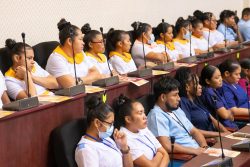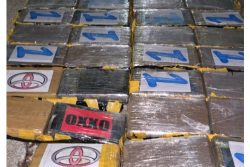On August 11th, Stabroek News reported that the Australia-headquartered mining company, Troy Resources Guyana Inc was closing its gold mining operations in Guyana as it does not find the market feasible anymore.
In a notice in the newspaper, the company announced the sale of its assets and sources told Stabroek News that “the company has basically shuttered its Guyana operations and is waiting on the administrator to give word of the final day…”
There are many lessons to be learnt from this saga particularly the investment capital that is required in large scale mines of this type from exploration to production. When the markets sour investors lose big and profit to the same extent when fortunes go in the other direction. Troy’s Karouni mine and the other large operation at Aurora – both pre-oil- were trumpeted by the Ramotar administration as likely big contributors to GDP, employment and exports. Just years later, Troy is leaving and Aurora has seen ownership change from a Canadian miner, Guyana Goldfields Inc to Chinese company, Zijin Mining Group Co., Ltd.
However, the immediate primary concern for the country and its people is that Troy Resources complies with its statutory mine closure plan and that this is policed sedulously by the Guyana Geology and Mines Commission (GGMC). Too many parts of mineral bearing areas in the hinterland have been left scarred and pockmarked by miners – large, medium and small – after having ripped out precious metals and gems. Troy Resources must not fall into this category. It must be held fully to the terms of its mine closure agreement.
Since the revelation about the impending closure of Troy Resources’ mine there has been silence on the way forward from both the government and Troy. At last word the government has signalled that Troy Resources has not formally notified it of its departure. The signs are not propitious. After extracting gold over the period it has been in business, one would have expected that Troy would have honoured its obligations under the Karouni Mineral Agreement with the GGMC in 2014 under the signature of then Minister of Natural Resources Robert Persaud, the provisions of its Environmental and Social Impact Assessment that preceded its licensing, its mine closure plan and the GGMC Act.
It behoves the GGMC and the Ministry of Natural Sources to immediately determine from Troy’s representatives here and its principals in Australia about their intentions. Incidentally, Troy Resources’ previously well-functioning website seems to have been taken down. The question will naturally arise as to whether given the financial and other upheavals it has faced Troy is in a position to discharge all of its obligations under the mine closure plan.
Certainly, the GGMC had to have been aware from its inspectors and the filings by Troy that it was unlikely that it would resume operations at which point the regulatory authorities needed to begin preserving the interest of the country vis-a-vis reclamation of the area.
What will be completely unacceptable would be any attempt by this government to free Troy Resources of its obligations on the pretext that the area would then be offered up for new investor interest. The terms of the agreement which Troy abided by for years have to be met. Furthermore, there is no likelihood of any quick turnaround in the operating of the mine. Increasingly, the government has to mull whether large scale operators should be operating these mines considering the decades of extraction, the slight returns to the state and the serious pollution risks from tailings ponds and other features.
The Ministry of Labour will also have to ascertain that the benefits due to employees of Troy including severance are met. It should also be remembered that a resettlement plan had to be drawn up for the dozens of persons who resided at 14 Mile Issano prior to gold extraction.
Troy Resources utilised cyanide in its gold extraction operations and it would be of great interest whether there has been complete degradation of toxic remnants from its processing and how it proposes to close the tailings pond. Are cyanide and other toxic chemicals stored at site? A survey of this area should be undertaken by the Environmental Protection Agency immediately.
Presumably the Attorney General’s Chambers will advise the ministry and the GGMC on the way forward so as to ensure the rights of the country and its people are conserved.








